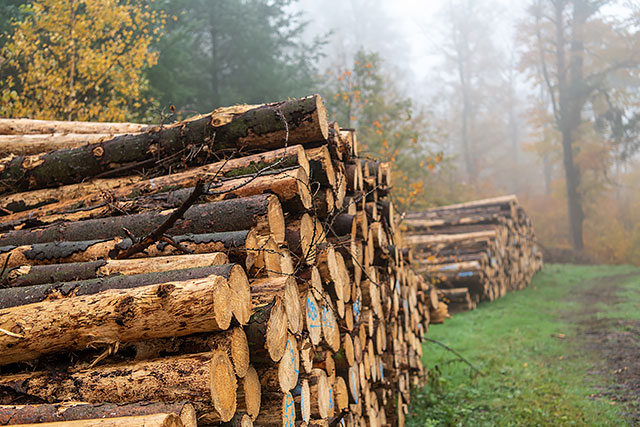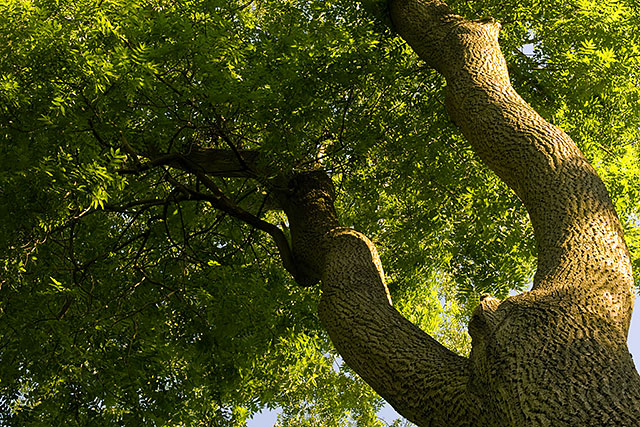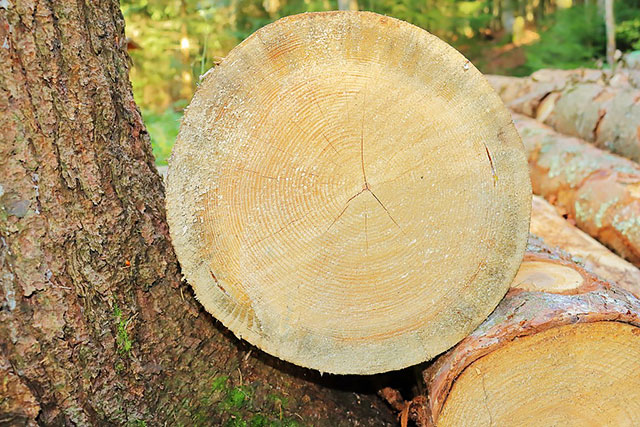The creation of a new wooden statue inspires every carver with great enthusiasm and joy. But the path that separates it from the final realization is long and requires several creative steps.
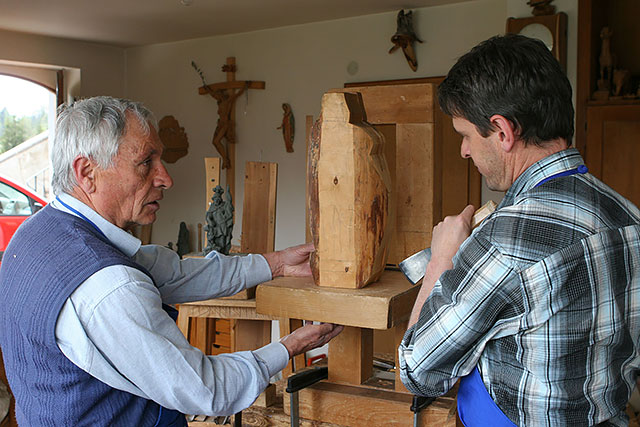
Table of contents
From the first draft to the wooden statue
The realization of the first ideas for a new woodwork is always a particularly exciting experience for wood carvers and model makers. In fact, sketches drawn by hand on paper, in addition to one's own creativity, provide above all a lot of emotional commitment. With the help of the illustrated ideas, model figures are first created.
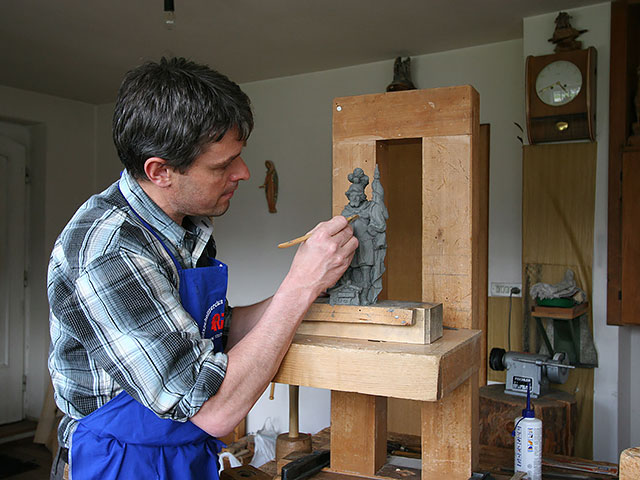 Clay model of the next figure.
Clay model of the next figure.The models use clay or plasticine, two easily modifiable and reproducible materials. Often more than one artist is involved in the creation process. Various modeling tools are used, including the fork, roller and paste, hole cutters, washers and rolling blades, silicone brush and spatula. Before passing the basic model to the sculptor, many small details are improved and modified. The modeler and the sculptor can be the same person.
The prototype of the hand-carved wooden statue
As soon as the modeler is satisfied with his plasticine character, he will be passed to the sculptor, who creates a first figure in wood carved by hand. The size of the work can influence the choice of wood to be used. For example, in addition to the maple and the lime wood also takes into account the swiss stone pine wood.
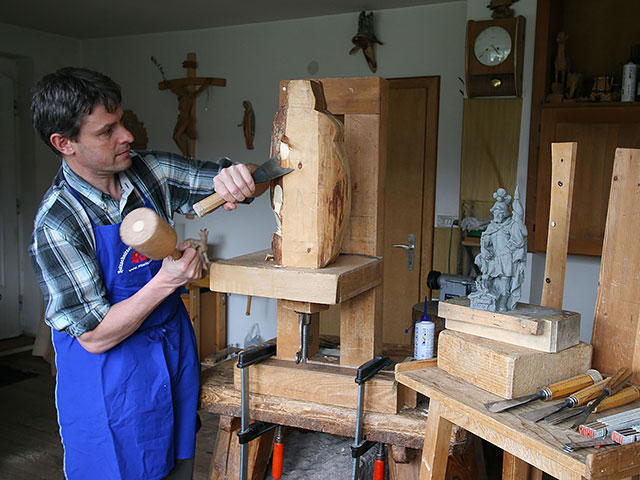 Realization of the prototype of the wooden figure
Realization of the prototype of the wooden figureThe wide range of carving tools you need includes stonecutters and carving knives, spatulas and bundles. Technological chisels and gouges are also used, such as chisels and carving knives, porcelain blade and various forms of crowbar. The decorative awl are used for the realization of very fine details.
The final result is the prototype of a perfect wooden statue, which is first poured into the bronze and then used in the so-called pantograph to reproduce the character.
The meaning of the pantograph
The pantograph is a precision mechanical instrument that allows you to transmit existing drawings in an absolutely identical way. The transmission can be on an identical scale, smaller or larger. The pantograph used for carved figures is a large machine that now, instead of a drawing, scans an existing bronze model and then produces an arbitrary number of identical pieces of raw wood.
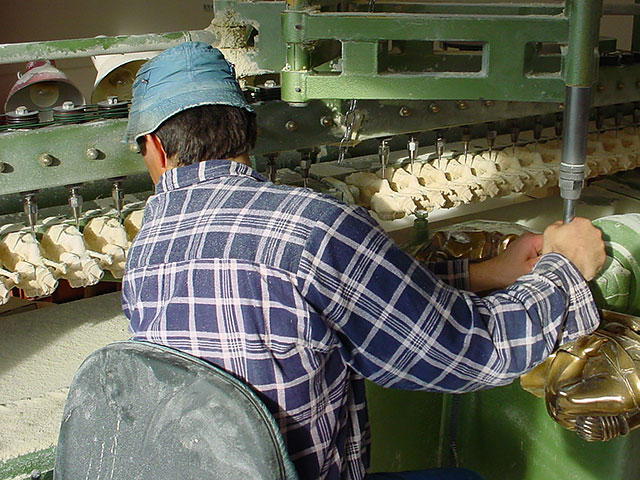 Working with pantograph
Working with pantographThe wood comes from healthy logs of maple, linden or Swiss stone pine, which have been left to dry for many months cut to size in the form of wood. Light maple wood barely darkens and is very hard, lime wood is softer and is often used for larger figures. Swiss pine wood is even softer and red and is used for smaller shapes or smaller pieces. Before the pantograph is fitted, the well dried planks are again cut into small blocks of wood.
From a rough piece from carving to a wooden statue with a strong characteristic
The pantograph works practically like a carving machine. It produces raw carving pieces, which are then finished by hand. The wood carvers offer very fine details, smooth the surface and pay special attention to expressive faces. Not infrequently they use carving knives with which their fathers and grandfathers have worked.
The soft pleated shape of a garment, the emotional mimicry of a face or a particular posture of the hand and body, are an expression of the talent of the artist who controls the ability of the fingers. With delicacy and patience they give each figure the final touch. Afterwards the hand-carved characters are ready and are presented in the "Natural" version..
The different executions
For many, the natural form is one of the most beautiful. But there is a whole series of other transformations that find equally enthusiastic supporters. Included are stained, antiqued, painted and decorated versions with pure gold.
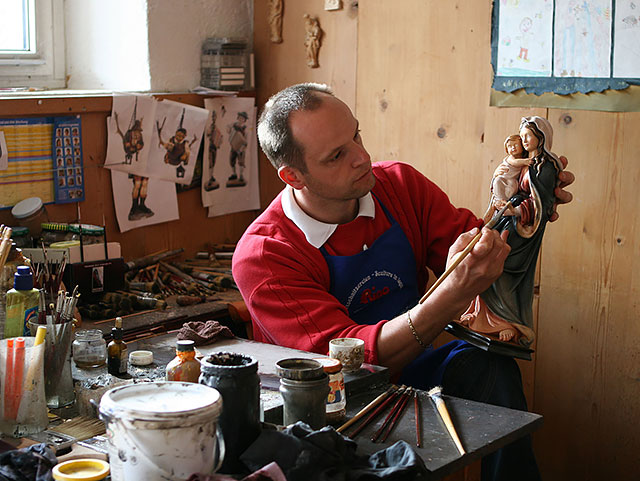 Refine a wooden statue
Refine a wooden statue- The stained wooden works are inserted with a light brown wax dye and then gently sanded with wax.
- For triple-etched ones, wax stains of at least three different shades of color are used. Also in this case the wax is smoothed gently.
- The expression "ancient" or "antiquated" is an artistic drawing on a curved plaster background where the wooden figure is finally gilded with the firing pin.
- The varnished wooden statues are rounded with nitro lacquer, then painted with oils and, if mounted, covered with percussion metal. If on the one hand painting with oil paints generally produces a more intense color, on the other hand the watercolor color is rather delicate and discreet. Wax polishing ensures a matt shine.
- A work of wood "real gold" is painted on a plaster, then antique before being finished with a 23 carat gold foil.
Whichever execution you choose, each character has its own character and brightness. And since, after the rough cut in the pantograph, every single phase of the work is carried out down to the smallest detail in an artisanal way, each work can be considered as a unique hand-carved piece.

